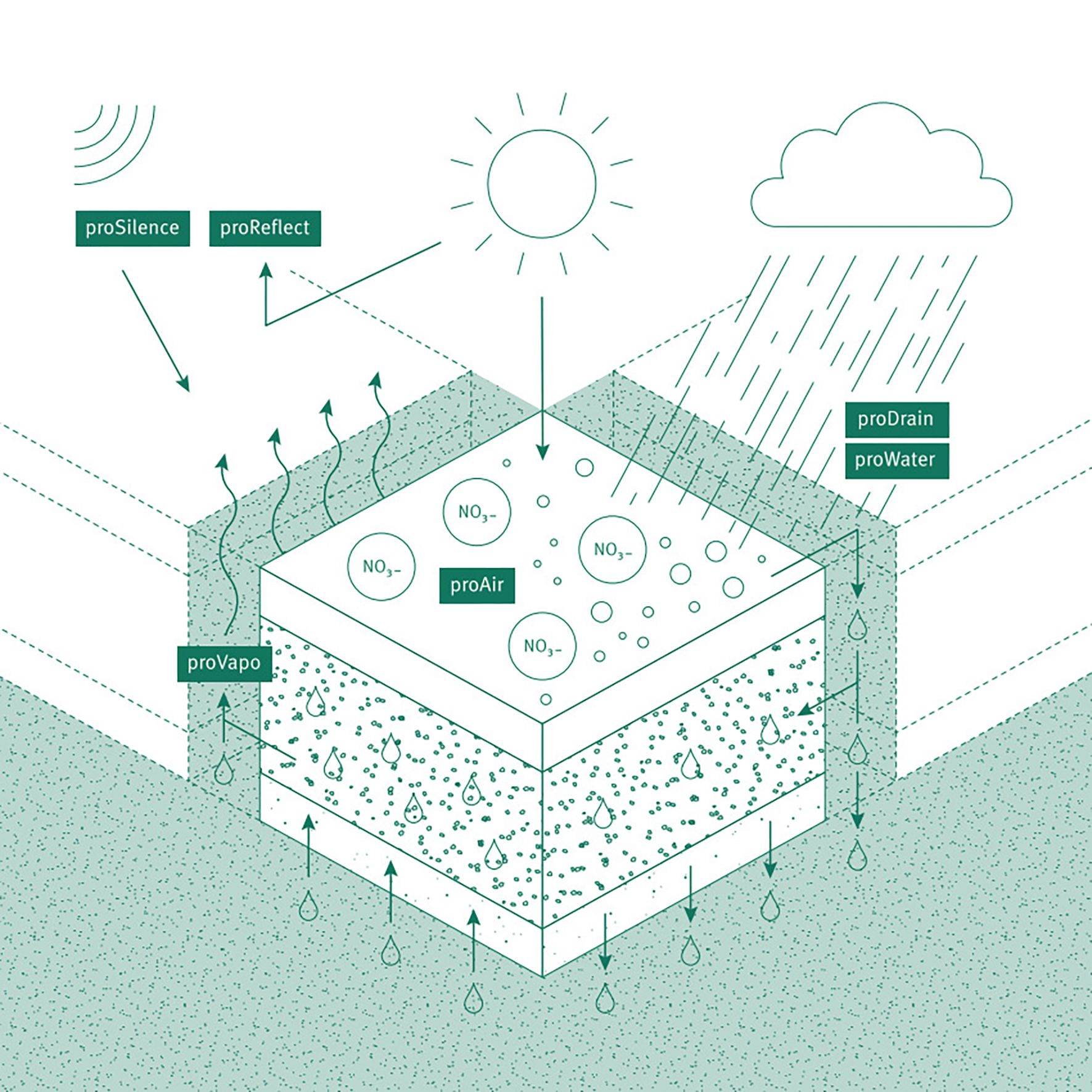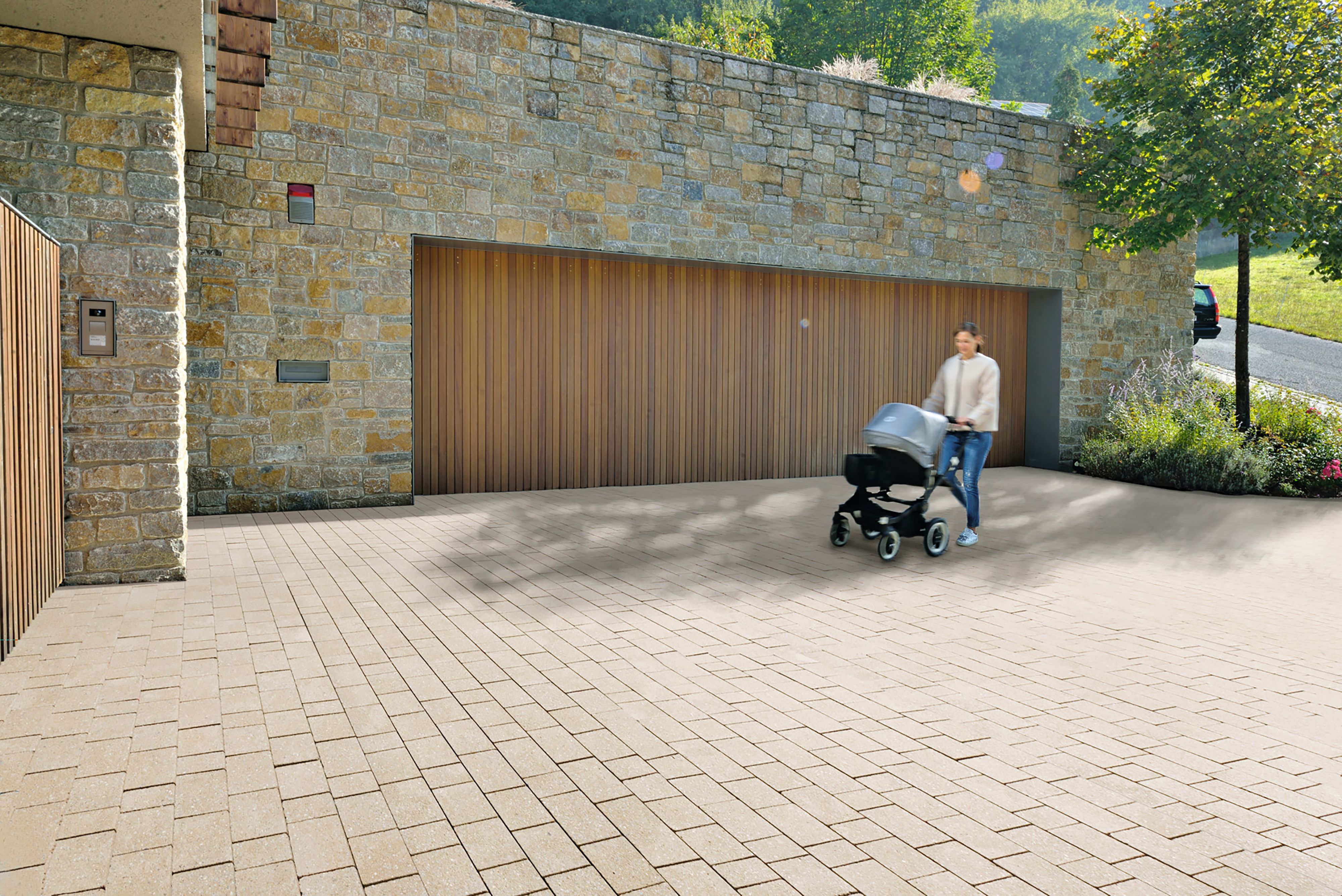»The Klimastein already saves resources at the manufacturing stage, but its exceptional planet friendly characteristics really come to the fore when it’s used. Its innovative design prevents any soil sealing. The paving stores water, allows excess water to seep away and later evaporate via capillary action. And, ultimately, it also really helps to cool down urban spaces.«
Prof. Matthias Held

Three questions for Laura Dechant, Communication, Social Media & Event
How did the idea for GDM.KLIMASTEIN come about?
As a paving manufacturer, we’ve been conducting research into ecological, permeable paving that allows drainage for over 40 years. We’ve already spent a long time investigating sensitive issues such as rainwater treatment, the lack of groundwater, and flooding in urban spaces. The GDM.KLIMASTEIN is the fourth generation of ecological paving systems. It’s the latest version of paving stones to enable decentralised precipitation drainage and evaporation on the surface, or it returns it to the groundwater where it’s stored.
What was your personal highlight in the GDM.KLIMASTEIN development process? Was there a low point?
GDM.KLIMASTEIN is so innovative because it consists of three layers. Paving is usually designed to produce stones that consists of two. Therefore, to produce three-layer stones, we had to spend a great deal of time configuring the machine. Right until the end, it wasn’t clear whether this method would work. My personal highlight was when, after five years in development, we realised that our idea could go into production and that the three stone layers do exactly what they’re supposed to.
Where do you see your project in the next five years?
In our opinion, the GDM.KLIMASTEIN is indispensable in the redesign of water-critical urban spaces and new developments. As a local drainage system with a regenerable pollutant filter, it ensures the groundwater stays clean. Thanks to its ability to store and evaporate rainwater, it acts as an extensive air conditioning system for densely populated residential areas. Therefore, combined with trees and plants, it plays a key role in restoring the feel-good factor in towns and cities. It’s also an impressive solution for sponge city initiatives.
